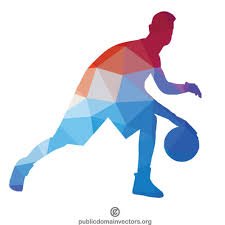The demands of basketball
We would like you to avoid the most common basketball injuries. Of course, accidents will happen. But adopting just a few changes can help reduce your risks.
Basketball is a fast pace game. And it is truly a multi-directional sport. There are explosive movements forward and back, side to side, and even vertically.
It’s a game that requires you to change direction quickly and often. Consequently, many injuries occur as you decelerate your movement or push off to accelerate. Therefore, muscles and joints need to be properly prepared.
Common Basketball Injuries
What are the most common basketball injuries?
Unsurprisingly, the knees and the ankles suffer the most.
Many players’ knees are affected by patellofemoral pain syndrome. This complicated-sounding condition is also referred to as ‘jumper’s knee’. It is often due to overuse. But can also be to do with poor alignment of the knees. It can lead to pain and stiffness that makes it difficult to walk around normally.
The ankles are also a problem area. But thankfully, most injuries to the ankles are minor. Often, it is just sprains and strains that are the problem. But sometimes there can be acute damage to ligaments. This often occurs if you land off-balance after a jump.
How to reduce the risk of knee and ankle injuries
Clearly, working out in the gym will help your general conditioning. And therefore, make you less prone to injury. There are, however, some drills you can do that provides extra protection.
There are specific drills you can do for something called proprioception. This term refers to your awareness of your limb positioning as you move around. Good proprioception is critical for basketball players. And improving your body awareness will help dramatically in preventing injuries.
The types of drills you can do include balancing exercises, crossover walks, and gentle plyometrics. If you are not familiar with these routines, learn them from someone who knows what they are talking about. Poorly performed plyometrics can actually increase your risk of injury. A qualified physiotherapist should be able to guide you on the right path.
In addition, it’s useful to incorporate work with wobble cushions or stability balls. Again, make sure you are guided by a professional.
There are. of course, a host of injuries that occur on a regular basis. The hips, wrists, and thighs are all prone to problems. But they are less common than issues with the ankles and knees.
Treating common basketball injuries
Minor injuries to the knees and ankles will often cause inflammation and swelling. As a guideline for less serious injuries, it’s always useful to follow the PRICE protocol.
PRICE is an acronym that stands for Protect, rest, ice, compress and elevate.
- protect the injured area with neoprene support or strapping
- fully rest the injury for the first few days – use crutches to avoid weight-bearing if necessary
- ice the swollen area for between 10-20 minutes every two or three hours
- lightly compress the injured area with bandages to reduce swelling
- Elevate the leg (above heart-level if possible).
Finally, make sure you go through a full period of rehab before playing competitively.
For a more detailed assessment of any basketball-related injuries or have any questions about our treatments, please contact us. You can find us in Mill Hill Broadway and Islington. We are always happy to help!
We hope this information is useful. If you like this blog, please share!




